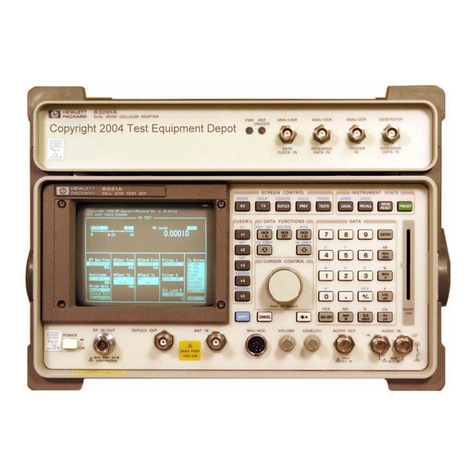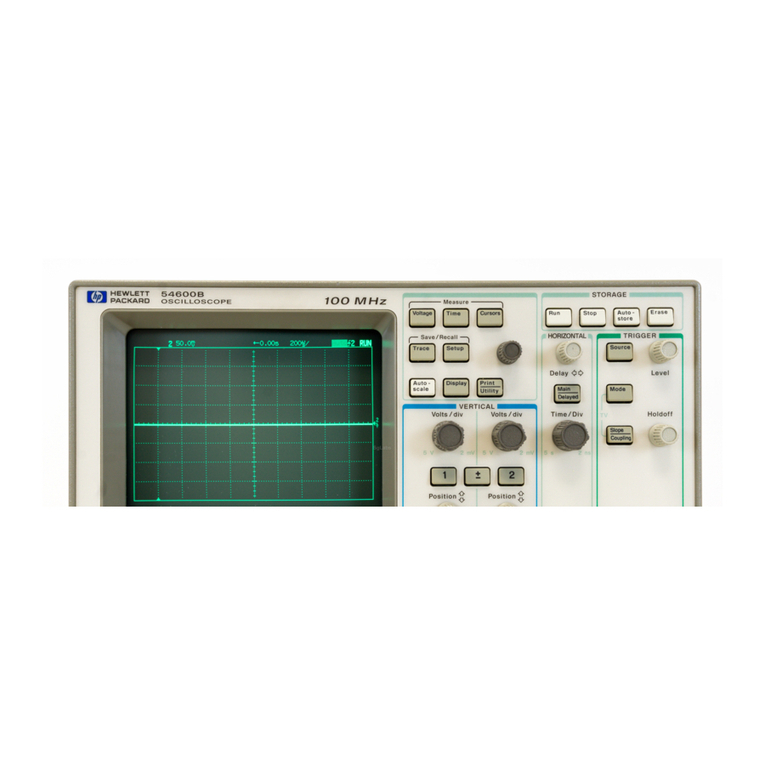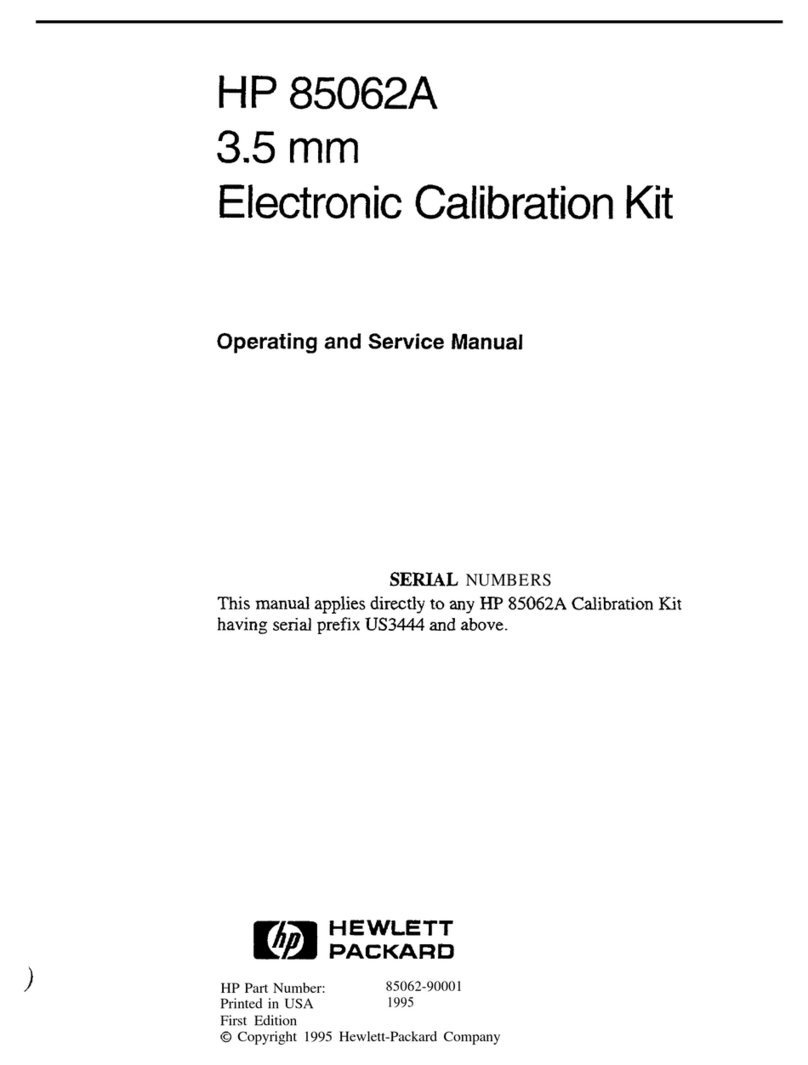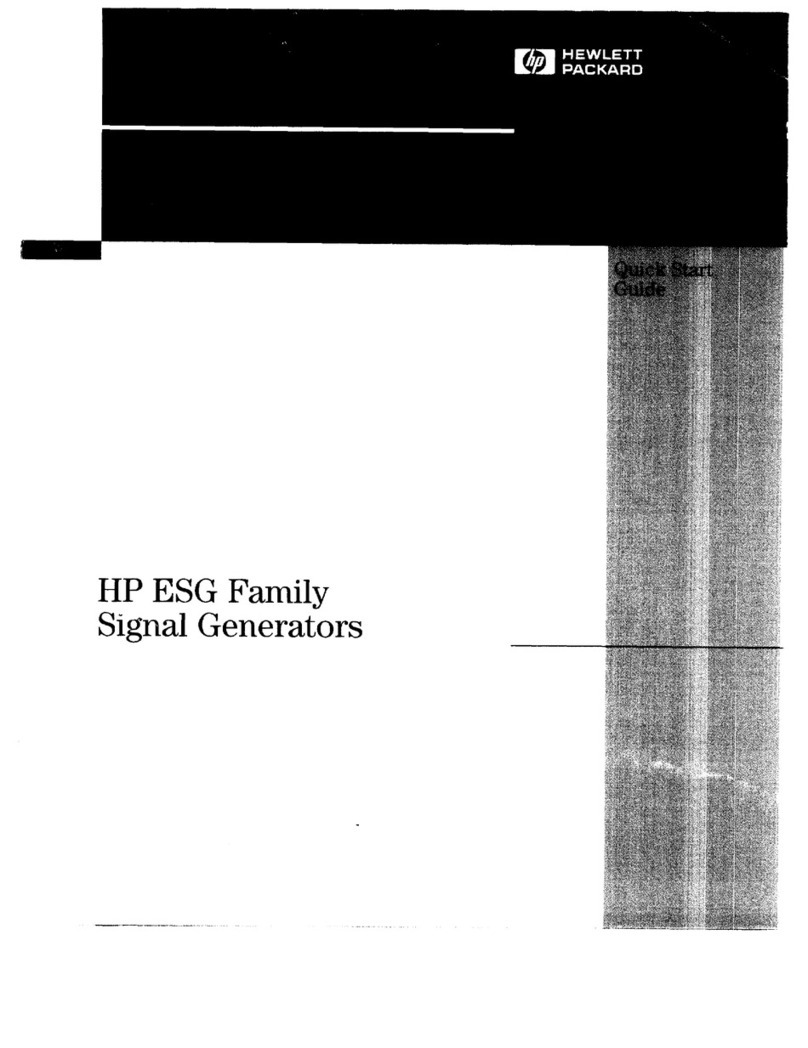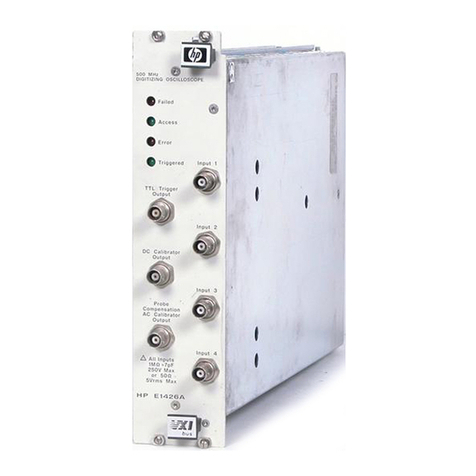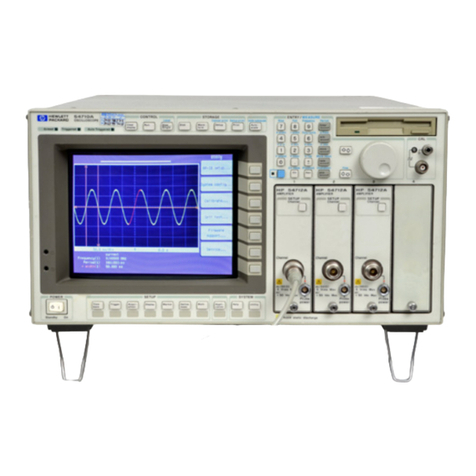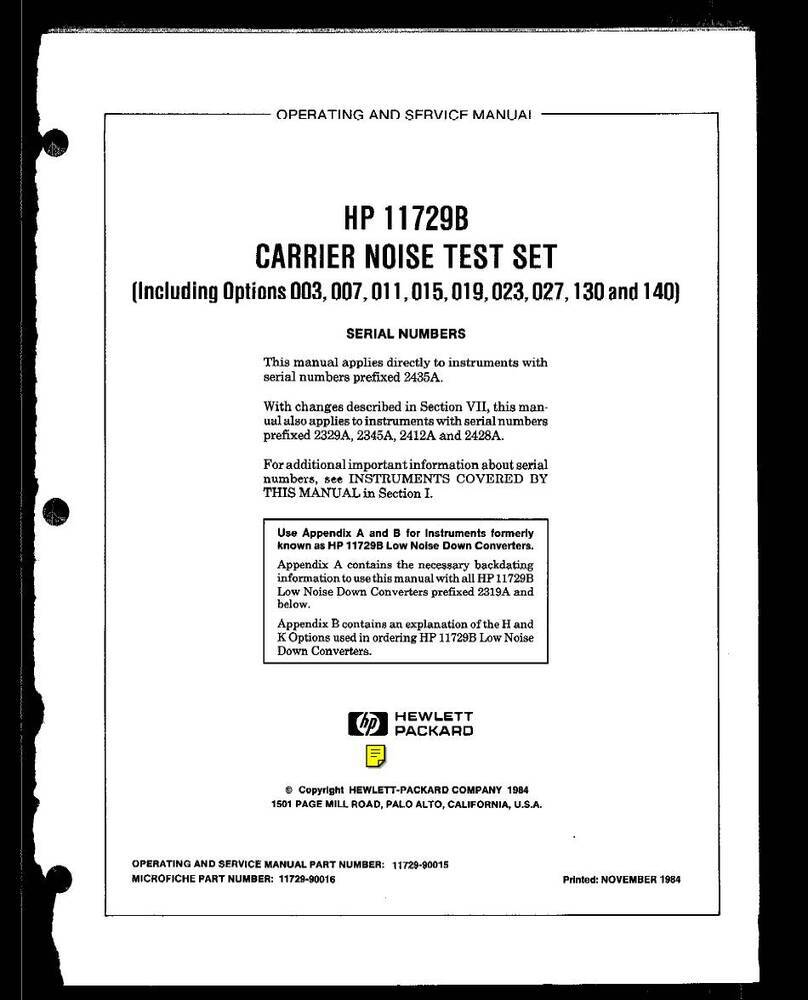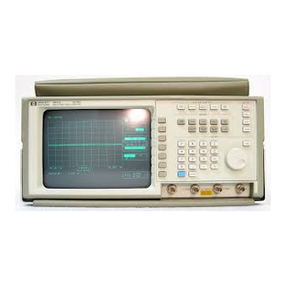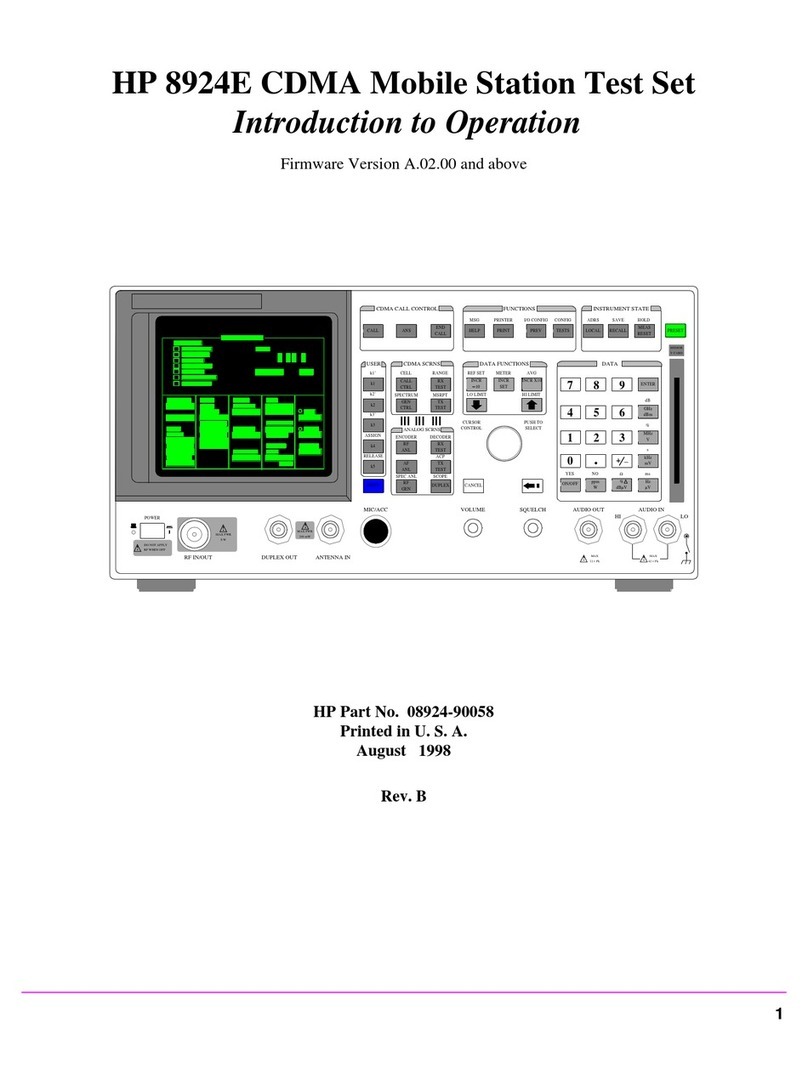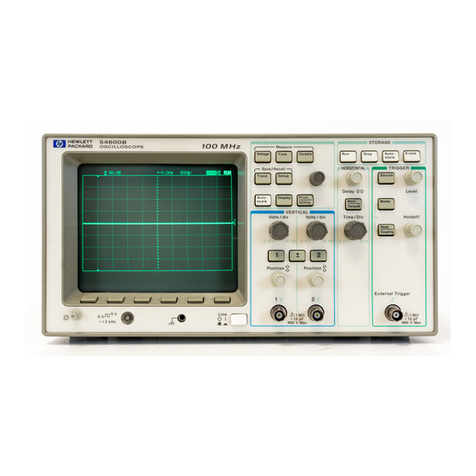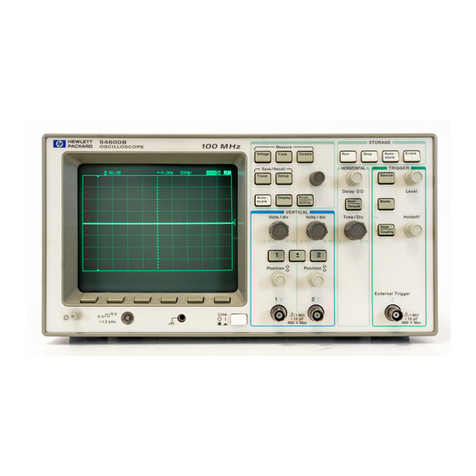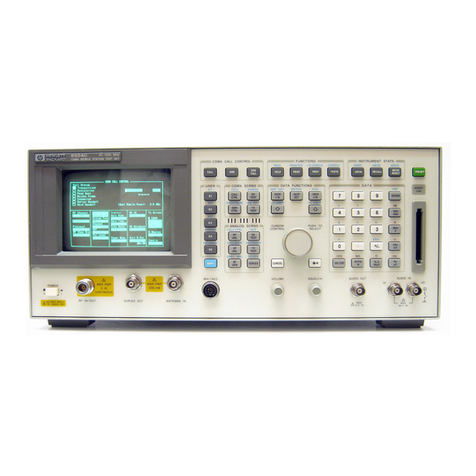
Model 182C General Information
SECTION I
GENERAL INFORMATION
1-1. INTRODUCTION.
1-2. This manual provides operating and servicing infor-
mation for the Hewlett-Packard Model 182C Oscilloscope.
The manual is divided into eight sections, each covering
aspecific topic or aspect of the instrument. All schematics
are located at the rear of the manual and can be unfolded
and used for reference while reading any part of the
manual
1-3. This section contains complete instrument specifi
cations {Table 1-1), adescription of features, warranty in-
formation, data for manual and instrument identification,
and information regarding accessories available for use
with the instrument. Table 1-2 lists and describes the
abbreviations used in this manual.
1-4. INSTRUMENT DESCRIPTION.
1-5. The Model 182C (Figure 1-1) is asolid-state, light-
weight laboratory and general-purpose oscilloscope with
plug-in capabilities. It is designed to display complex high
frequency waveforms and to measure alternating- and
direct-current voltages. Complete specifications are given
in Table 1-1.
1-6. The Model 182C is acabinet type instrument with a
built-in tilt stand, convenient carrying harrdle on top, and
feet mounted on both bottom and rear for either bench or
upright operation. Controls are arranged and located to
simplify operation.
1-7. For minimum size and weight with maximum reli-
ability. the Model 182C has solid-state circuitry through-
out except for the CRT. Power consumption, with plug ins,
is less than 120 watts at normal line voltage. The instru-
ment is convection cooled and designed to operate within
specifications at temperatures between 0° Cand 55° C
with up to 95% relative humidity at 40° C.
1-8. Alt power supplies, adual output calibrator, ahori-
zontal amplifier, agate amplifier and the CRT are
contained in this instrument. Operation at either 115V or
230V ac is selectable by aswitch located on the rear panel
of the oscilloscope. Located on the rear panel are
connectors for main and delayed gate, and main and
delayed sweep output signals. Connection for input of an
external signal for intensity modulation (Z-axis input) is
provided at the rear panel. An input signal of approx-
imately -I-2V having apulse width of greater than about
50 ns will blank atrace of normal intensity.
1-9. The Model 182C is designed to operate with a
number of different plug-in vertical amplifiers and time
bases. Presently available plug-ins provide awide choice
of operating capabilities such as wide bandwidth, sensi-
tivities, dual or four-channel operation, single or delayed
sweeps, sampling and time-domain reflectometer oper-
ation.
1-10. Modular type construction has been used through-
out the instrument. This makes it easy and simple to
remove units for quick maintenance. Assemblies are
constructed with interconnecting plugs and jacks and
each assembly can be removed without unsoldering
connections.
1-11. Acalibrator provides asquare-wave signal of
approximately 1kHz with arisetime of less than 3fxsec.
The calibrator output is available at the front panel at
amplitudes of 250 mV and 10V p-p with an accuracy
of ±1%. The signal may be used to check horizontal and
vertical deflection factors and to compensate divider
probes.
1-12. The oscilloscope horizontal amplifier accepts sweep
signals from the time base plug-in or an external signal.
Bandwidth is dc to 5MHz. dc-coupled, and 5Hz to 5MHz
with capacitive coupling. Two deflection factor ranges are
front panel selectable: 1V/div (XI), and 0.1 V/div ±5%
(X10). In addition, avernier control provides continuous
adjustment between ranges, The maximum external input
level is 3(X) Vdc, ac-coupled. with adynamic range of
+20V.
1-13. Abeam finder pushbutton control assists the oper-
ator in rapidly bringing adisplaced beam on screen. Its
use increases intensity and reduces vertical and horizontal
amplifier gain to quickly locate trace position.
1-14. CATHODE-RAY TUBE.
1-15. The Model 182C uses apost-accelerator aluminized
CRT with alarge eight by ten division display area of
133 cm^. Each division is 1.29 cm with 0.2-div sub-
divisions provided on the major axes. The graticule is
internal to the CRT, eliminating display parallax. Option
01 1instruments are provided with aP11 phosphor CRT.
The display intensity will not Increase when FIND BEAM
is depressed. This prevents phosphor burn.
1-16. The standard CRT supplied with this instrument
has aP31 aluminized phosphor, P2. P7 and P1 1phosphors
are also available as options.
1-1













